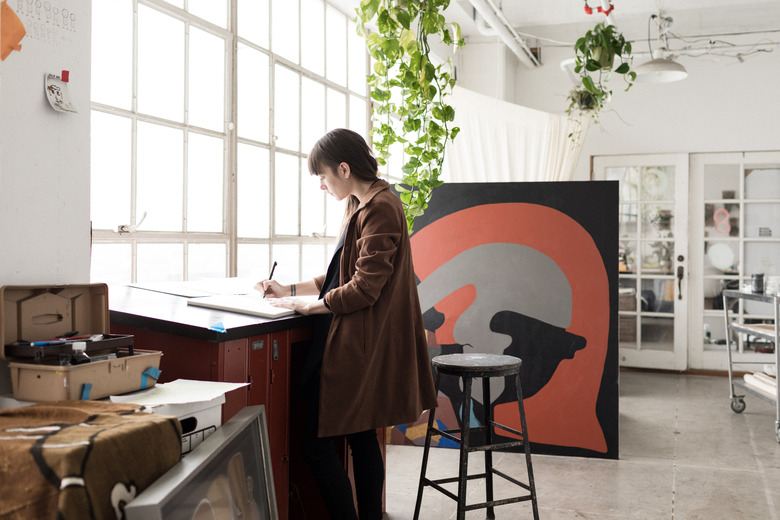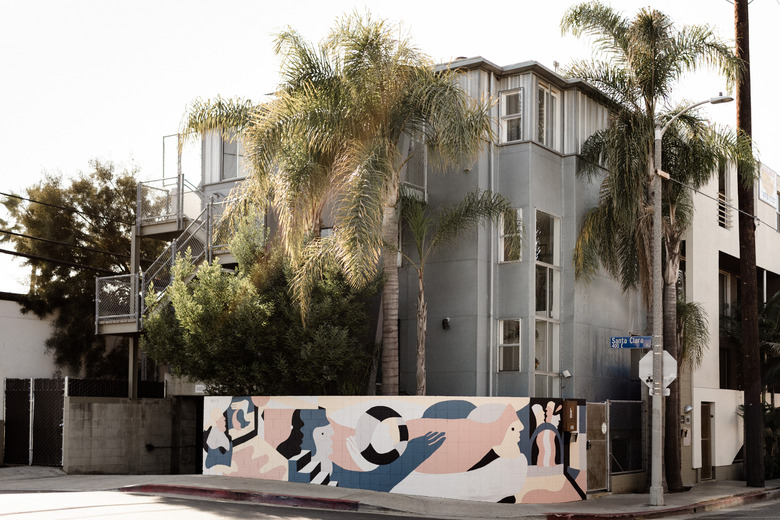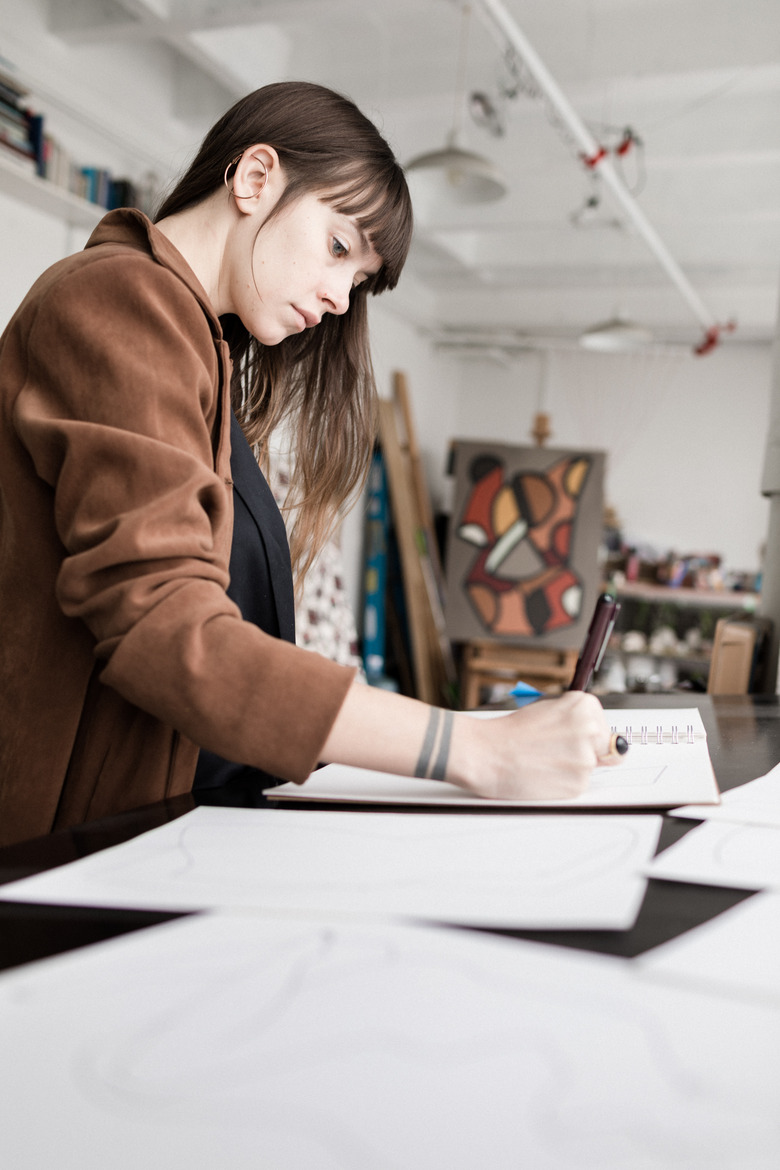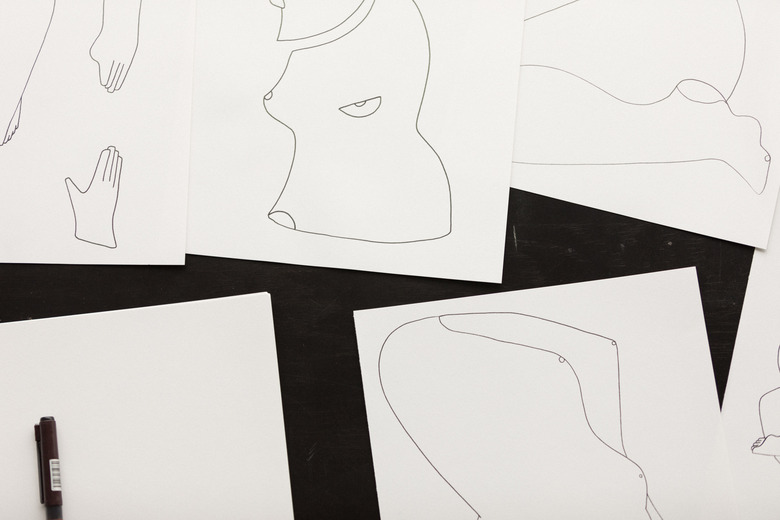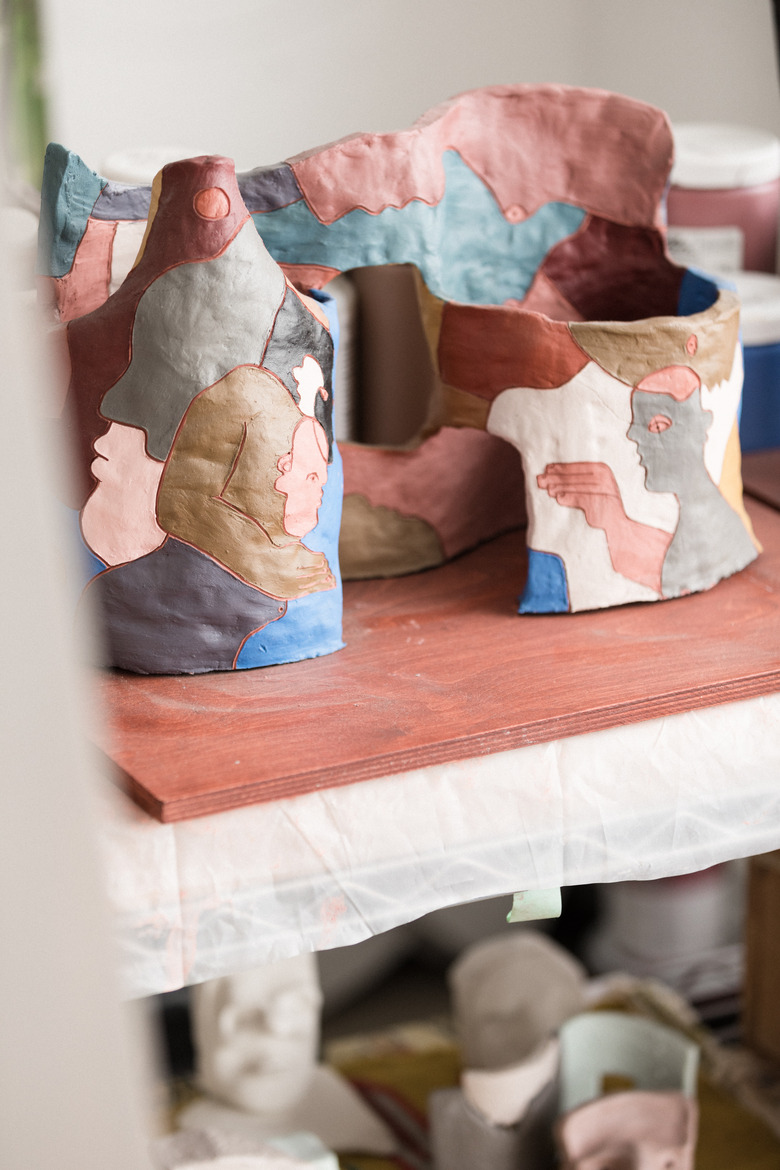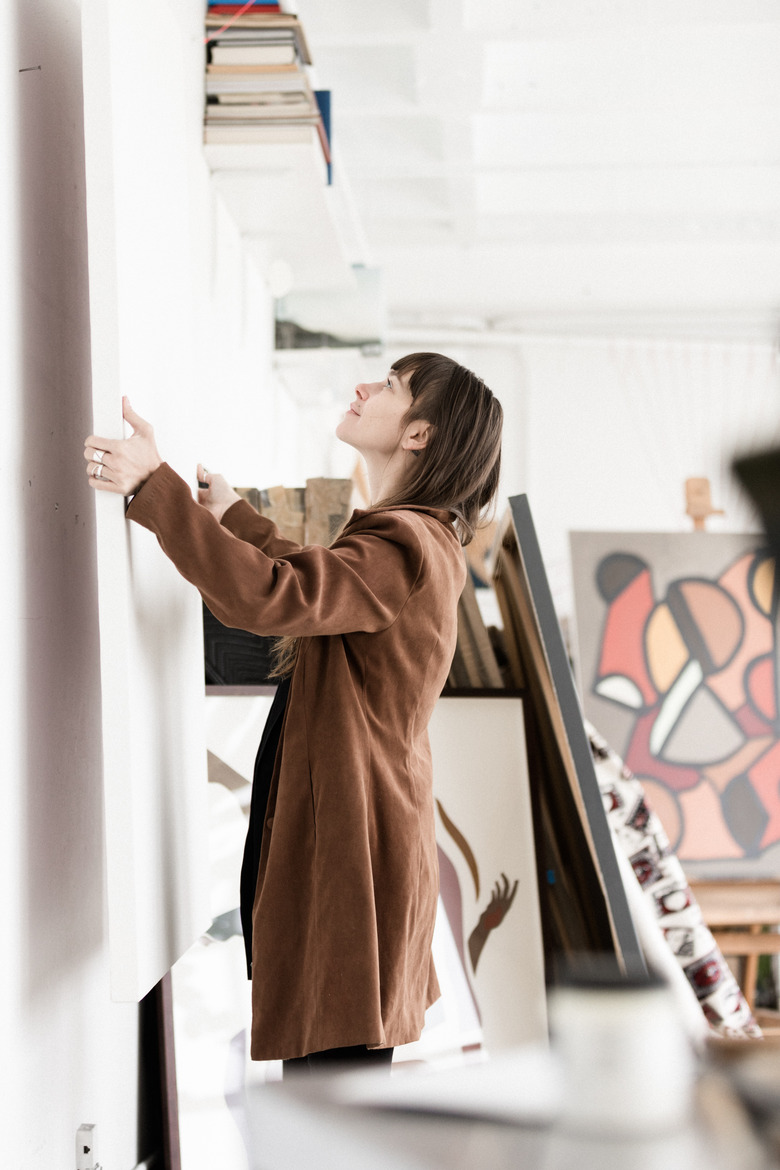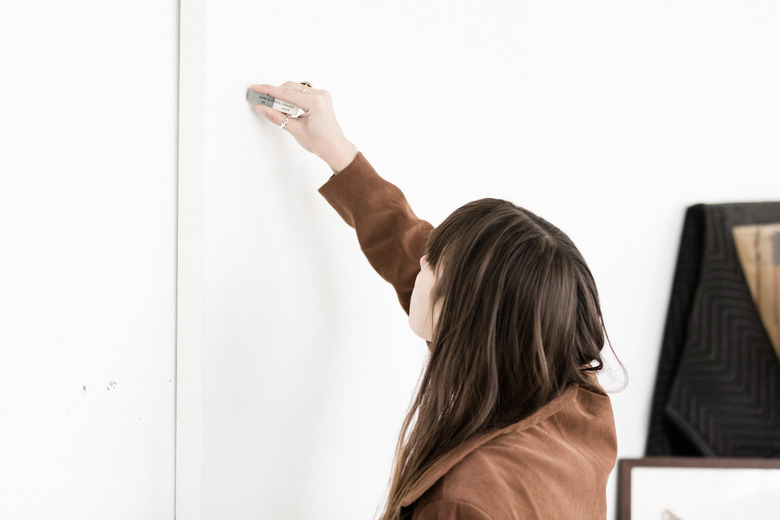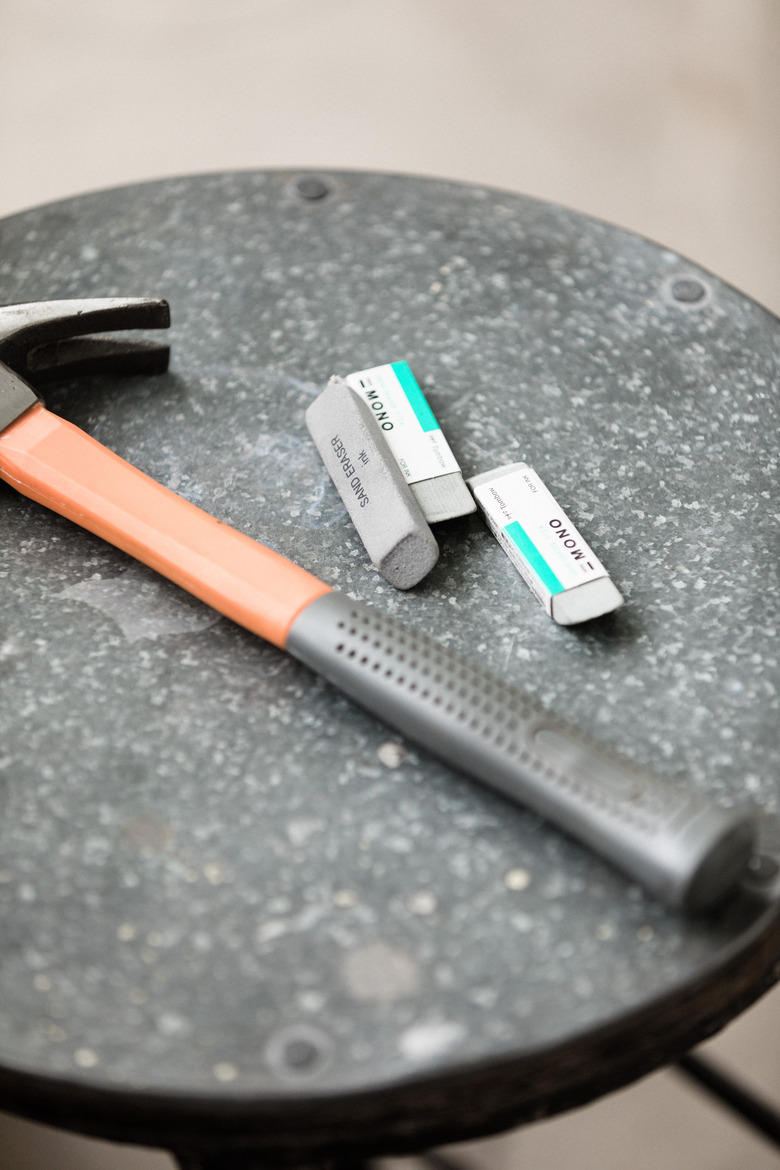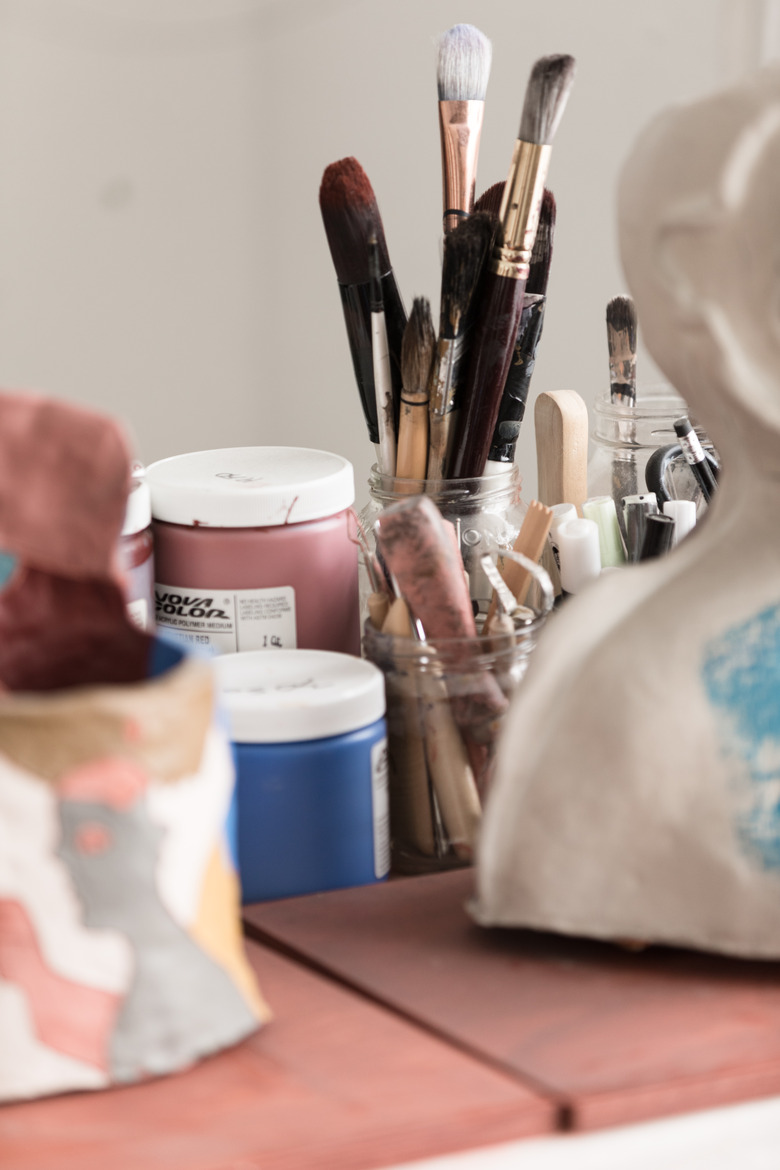In Conversation With Buckley, Featured Muralist At Hunker House
The mural on the wall outside of the Hunker House almost didn't happen. The details are now irrelevant — long approval delays, neighborhood politics. And then, everything came together at once. Hunker's creative director penned a passionate defense of the mural, the landlord relented, and Buckley — the L.A.- and Portland-based artist — got the call.
"I got off the phone, booked a flight, got in a taxi, and went straight to the airport," Buckley says of the whirlwind process. Once she landed in L.A, she went straight to Home Depot for materials, then directly to the house, woke up the next day and painted the wall in less than 48 hours.
The turnaround was only possible because the sketch had already come together. The theme for the mural was "first-timers," and the concept was to bring the interior feel of the Hunker House to the exterior. Buckley drew from her own experience, having recently moved into a place of her own for the first time in five years.
"It was a theme I had already meditated on all year — helping myself or one of my friends crack open a new home," she says. "And I love the idea of having this wall wrapping around a really intentional space that creates a conversation around design — like having a painted preview of what that discussion would be like."
The sketch itself took three days — longer than it took to paint, which is not atypical for Buckley. "I'd say the drawing process is where the intuition lives," she says. "The painting is mostly execution."
Now back in her studio, the Hunker House mural has informed Buckley's work on walls, as well as canvases, ever since.
Here, Buckley shares her thoughts on the Hunker House mural, her creative process, and where art and interior design meet.
Hunker: The mural on the Hunker House seems pretty representative of your current style — the human forms and faces, sort of puzzle-like.
Buckley: Actually, I think this wall, in particular, invited some new things for me.
Hunker: Really. How so?
Buckley: Dimensionality. I don't usually contain my figures; they're usually floating in space. I remember having slight butterflies when they were describing the concept. There was no way around putting people in a house — the theme pointed directly at it. I was so thankful. I lean on commissions to push me into new territory, and without fail, that's what they do. A commission is a new limitation — and that, I really appreciate.
For this wall, in particular, I had to think about architectural features, dimension, and encapsulating characters into spaces. I feel like it brought a lot more geometry to my work. I've integrated that into multiple paintings since.
Even just thinking about it, it's kind of meta. I spent the last two years traveling. I literally was a body in space, without my own four walls. Then, right around the time I got my apartment — it was so serendipitous — I had to draw a sketch about putting someone into four walls.
Hunker: Is that you in the mural?
Buckley: If you look at my work, it's all essentially me, in a way.
The idea is that the body is just an object. It's so universal. We all have one. It really transcends all of our separations, because everyone can relate to it.
For me, the act of using body is essentially an aspect of self-exploration. It's very striking to me how, when I see my figurative works, I see the exact shape I would make with my own body. It's a language that's deep inside of me, more than just an aesthetic expression.
Hunker: How do murals differ from other mediums?
Buckley: I love doing mural work. It's funny — I'm kind of an unusual painter in that I got my chops on murals, and now I'm applying what I've learned, technically, to canvases. Now I look at a big canvas and think, "Oh, it's really small, I don't know if I can fit my image in it." I had to learn how to scale it down.
A mural is also a performance — I love that about it. It's a demonstration of process. It shows people that everything is process. We're so used to seeing final results of something without seeing the work that went into it.
Hunker: I love this quote I read in a profile of you: "I draw to know myself better." Can you expand on that?
Drawing and painting are forms of active passivity. You're actively ... sitting there. I'm really not thinking about what I'm doing. Especially now, my work is second nature. I can just trust my hand. It then becomes this contemplative practice. I get to just weed through my thoughts and reflect.
When you're drawing, there's something unavoidable about spending hours and hours reflecting — you end up getting to know yourself in a more thorough way. It's so rare otherwise. Short of having a meditation practice, I can't think of many other life paths where your job is to just be alone and think — for days and hours and years on end. And to feel.
Hunker: How does the art you make connect with the world of design?
Buckley: Interior design is so multi-dimensional. It really pulls so many worlds together — it's like a mecca of makers, with all the craftspeople, designers, architects. It's the meeting place for all of us to create experiential, functional, and cohesive worlds.
Design is so important because, as we consider space and the way it looks, we're actively setting an energetic intention for the experiences that get to happen in that space. Somewhere along the line, in our modern culture, we stopped thinking about design as medicine, design as an essential aspect of our experience, how we live our day-to-day lives. It's almost a public service announcement, reminding people who are in the process of creating their space, or public spaces, to really think about resonance. What does an object energetically offer? What does the arrangement of objects in space bring into the world? Every design choice is an opportunity to elevate an experience. It's worth reminding people about the power of making those choices.
This interview has been edited for length and clarity.
You can see Buckley's work in L.A.'s Chinatown, on Market Street in San Francisco, and all across Portland.
